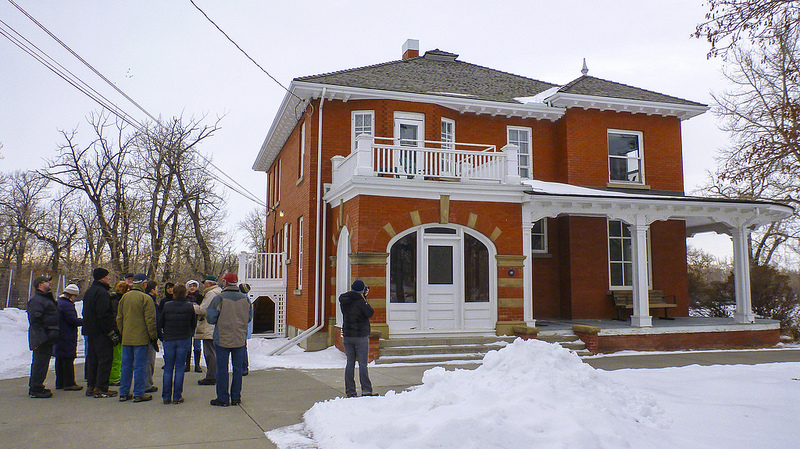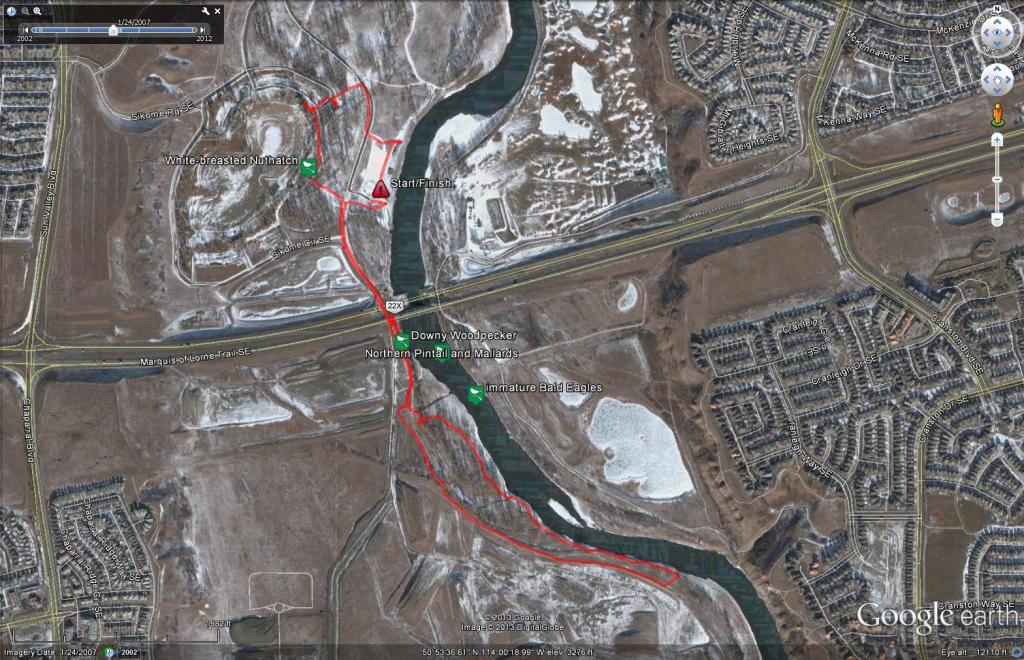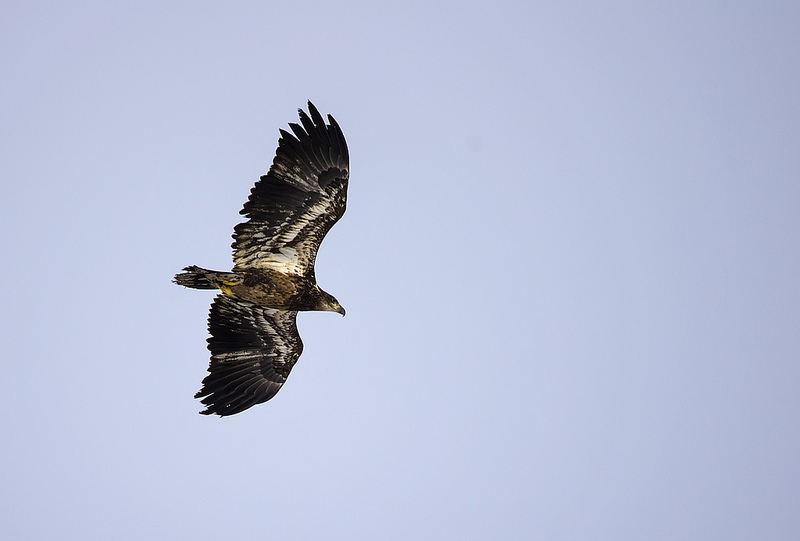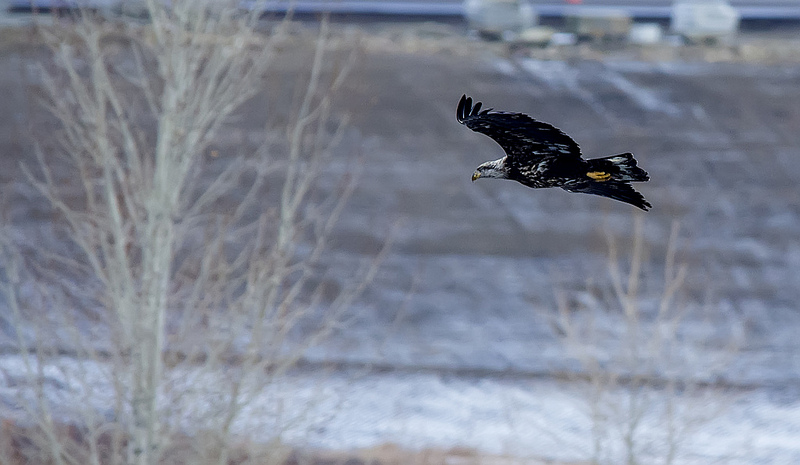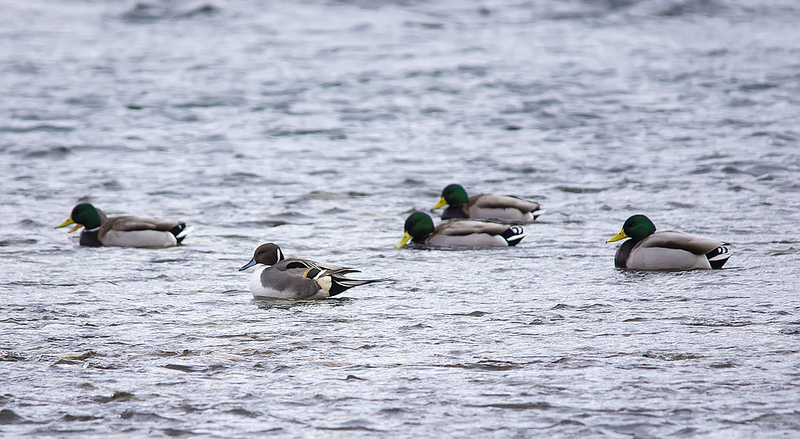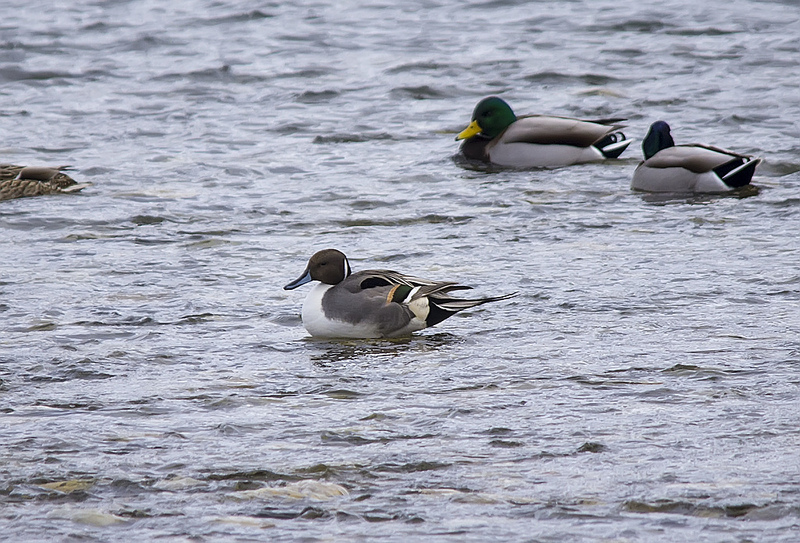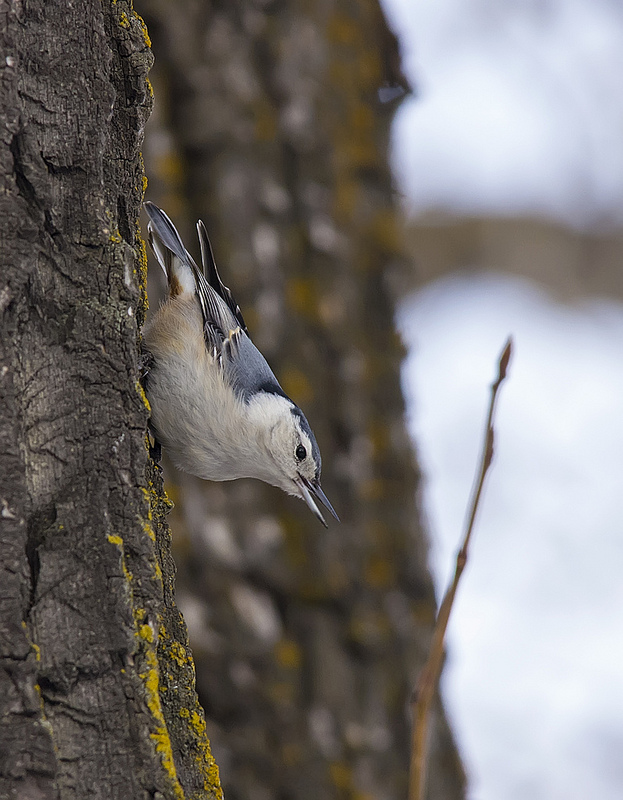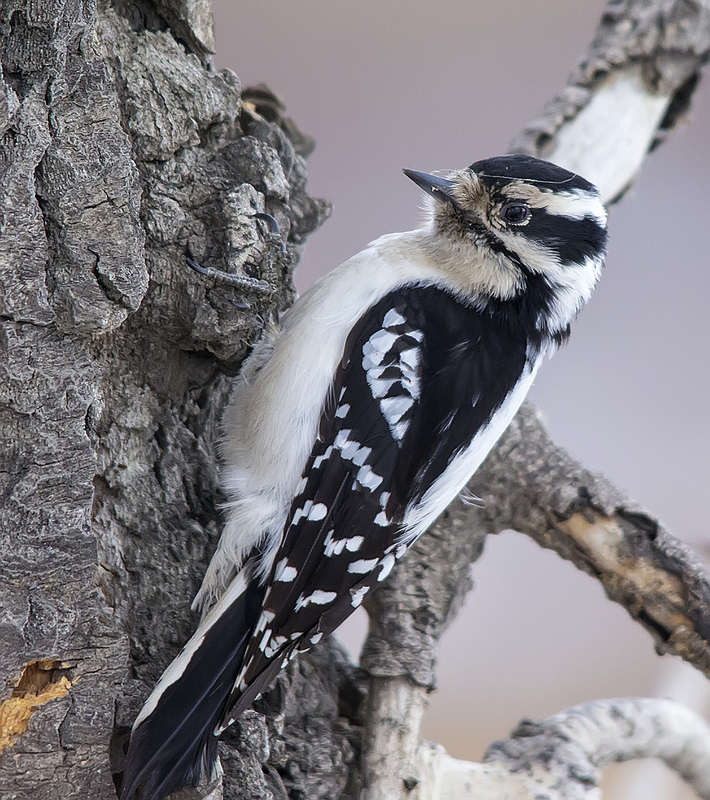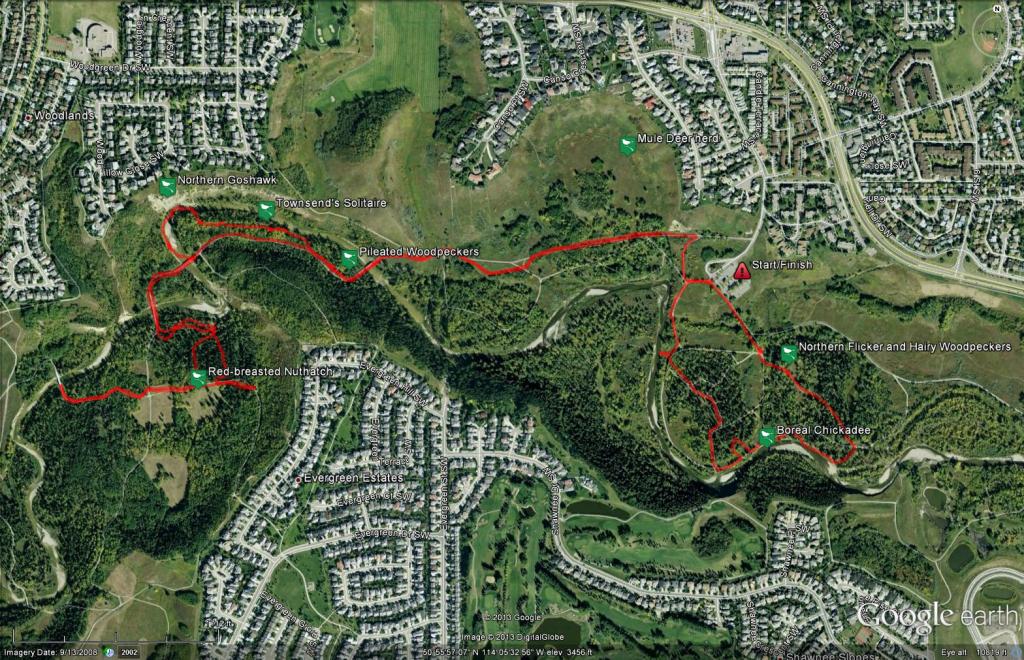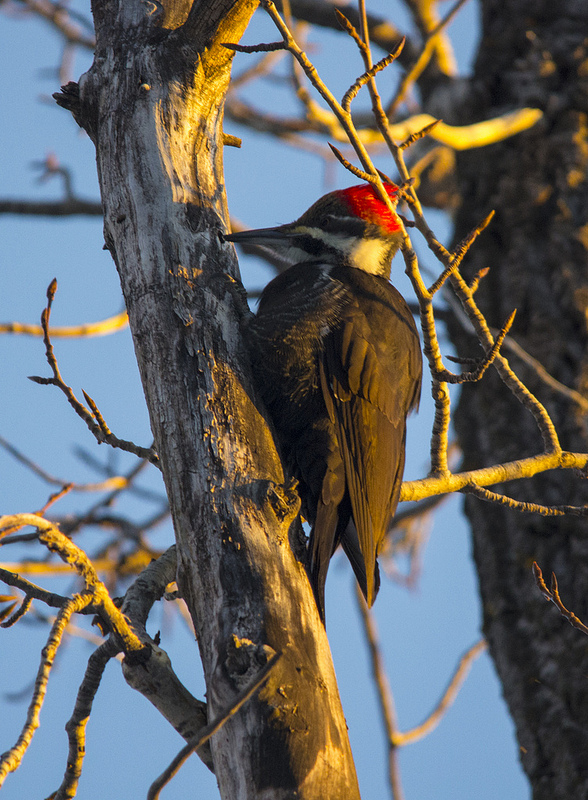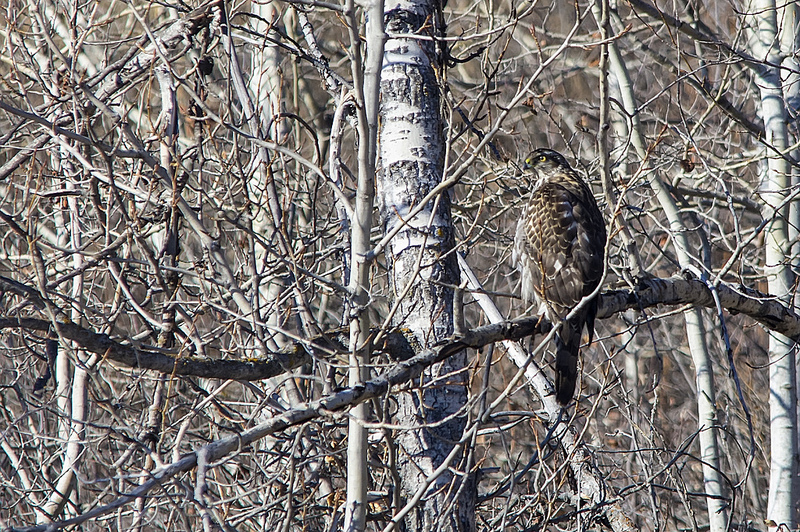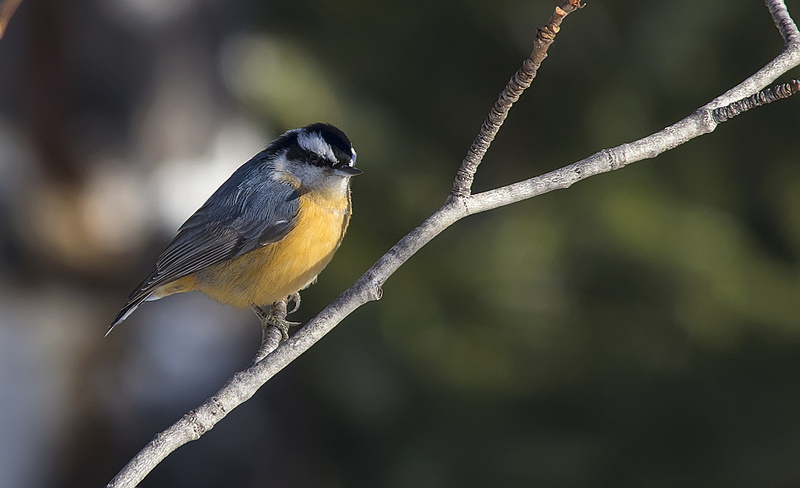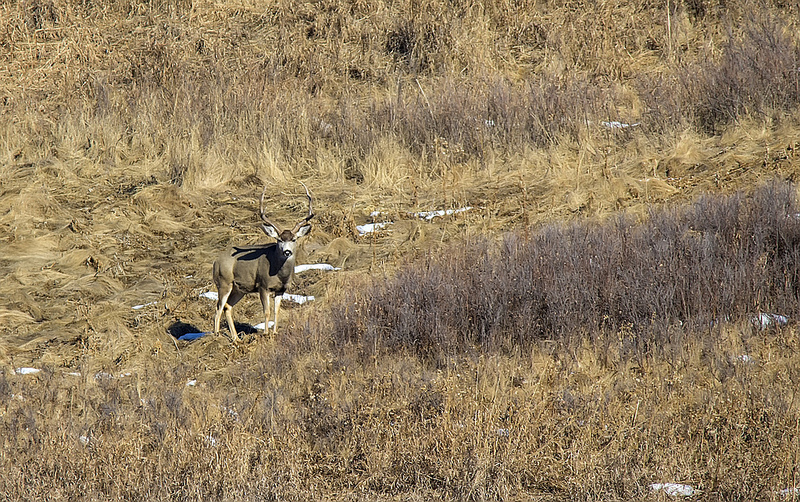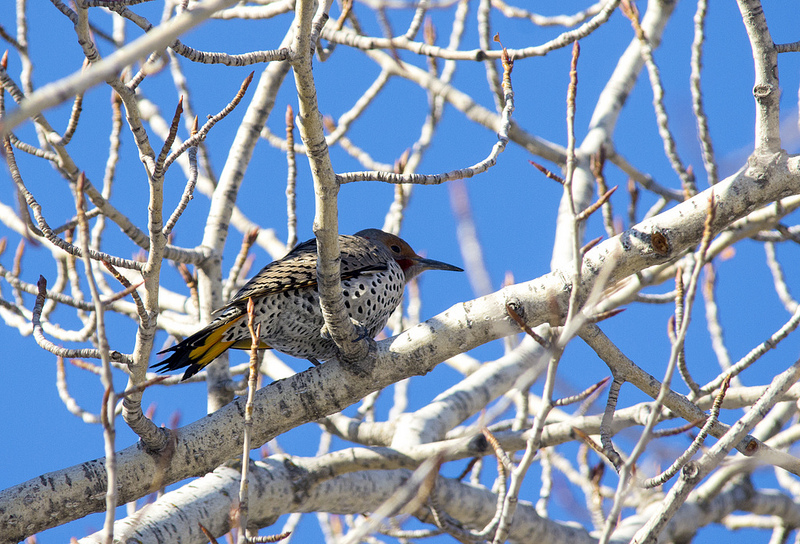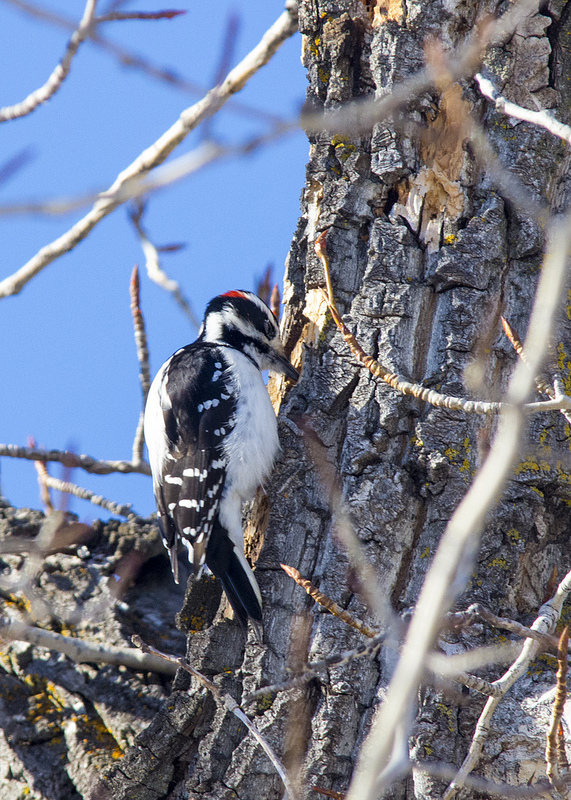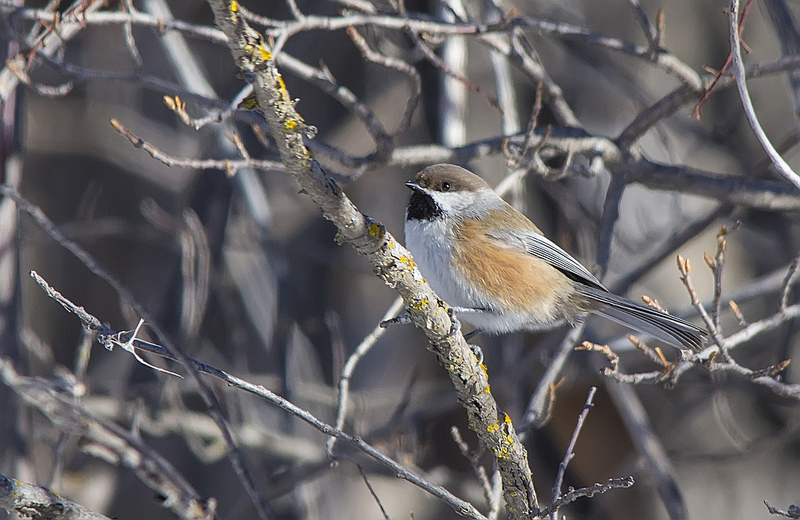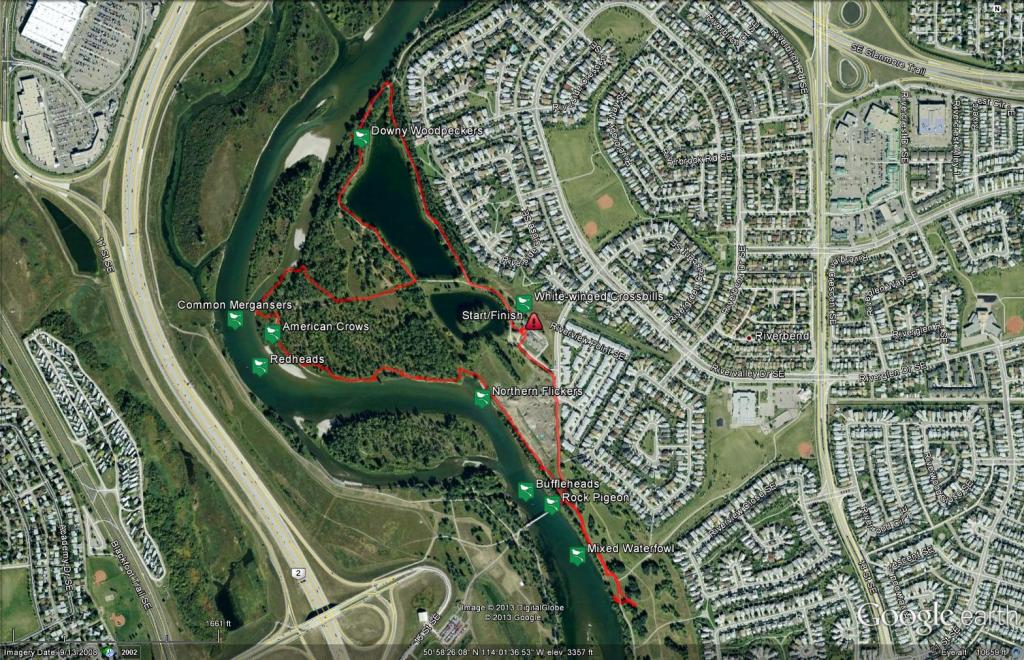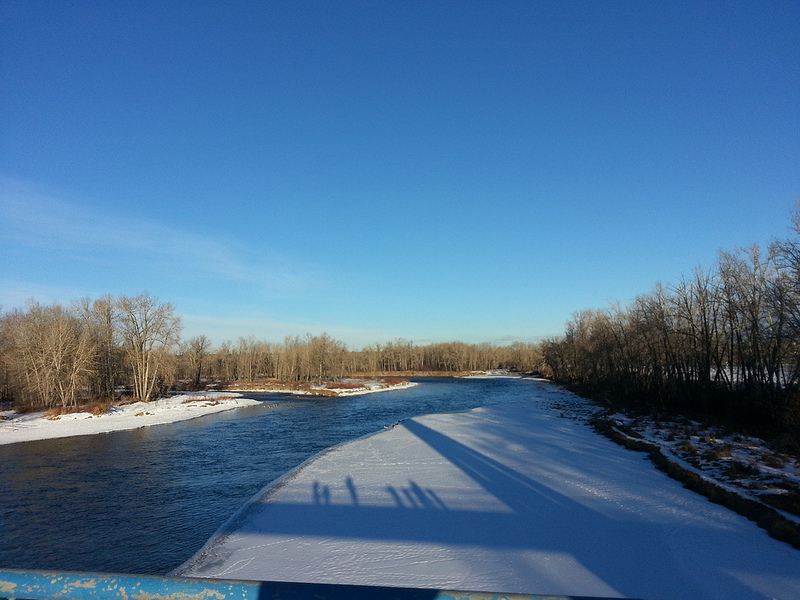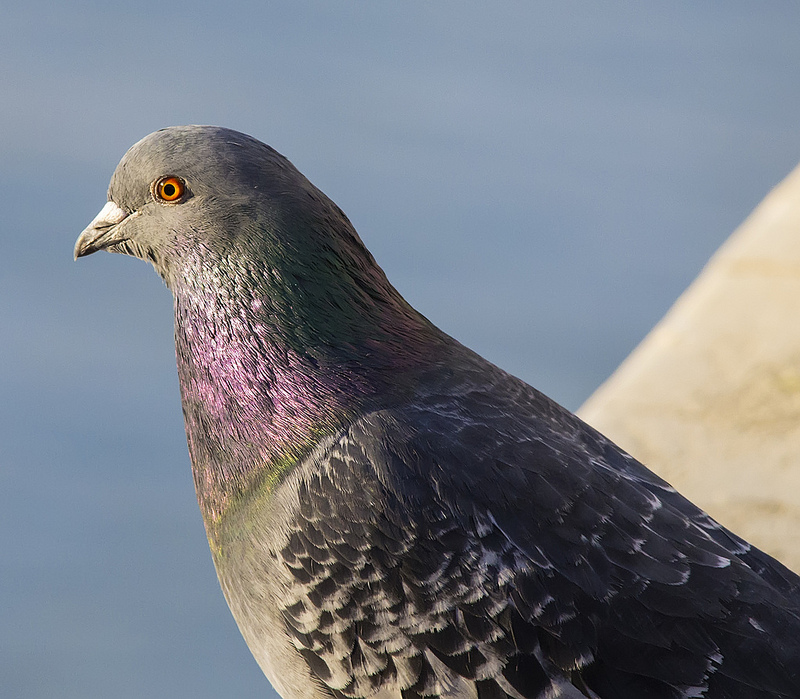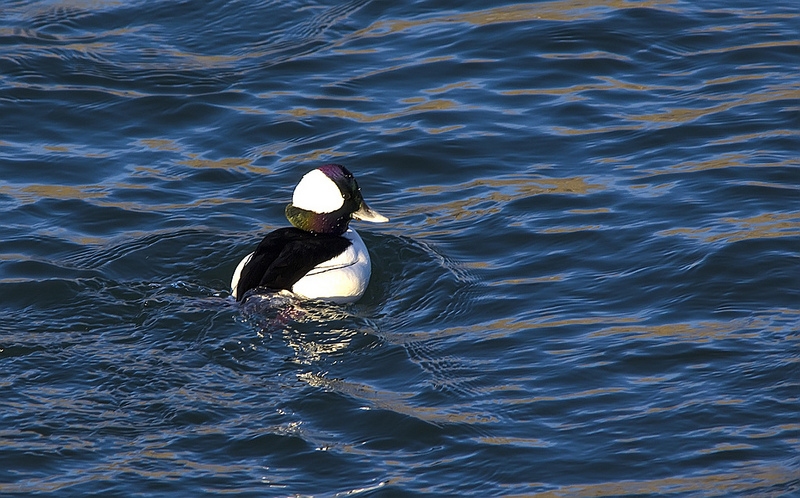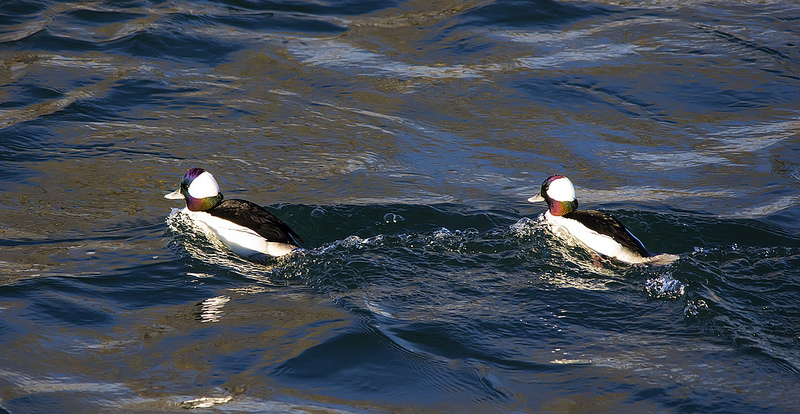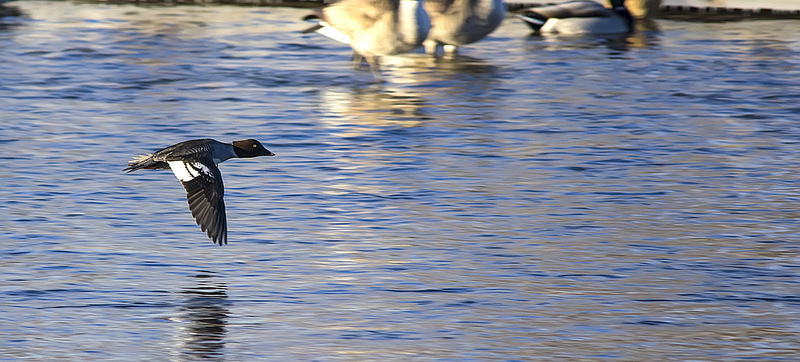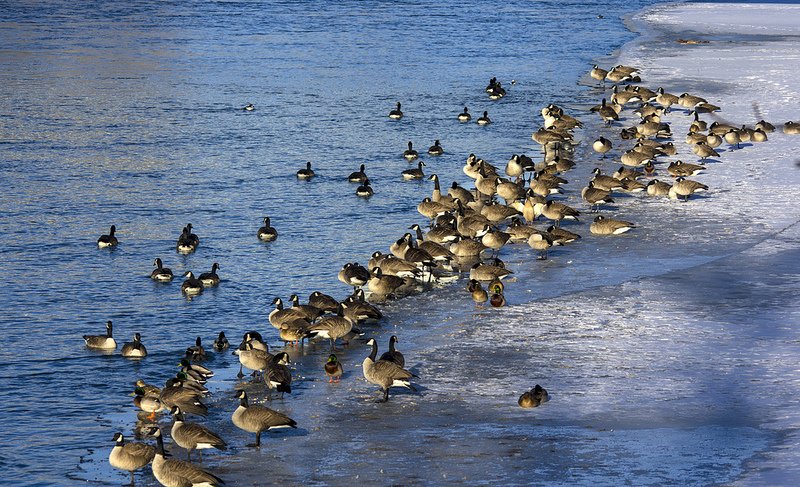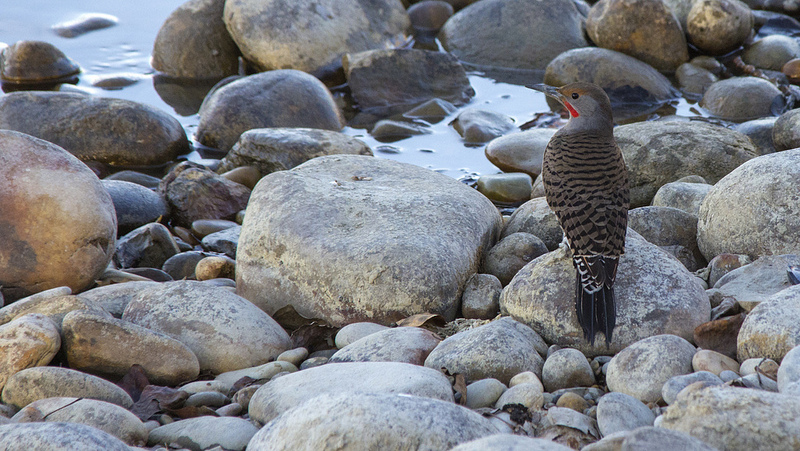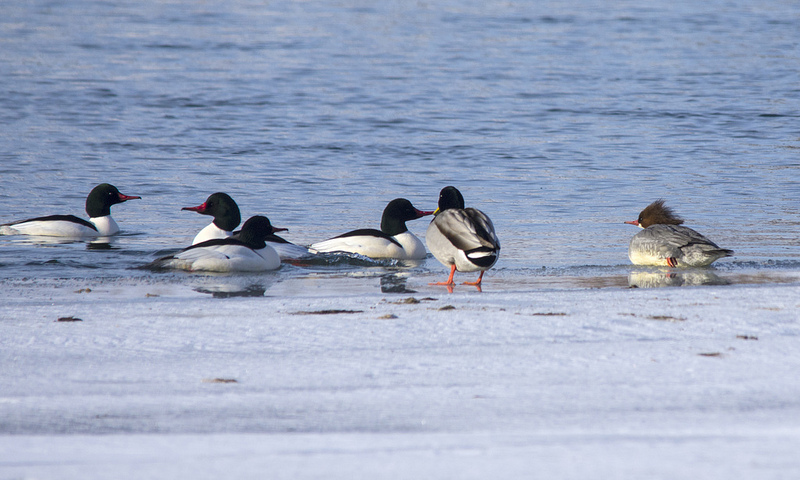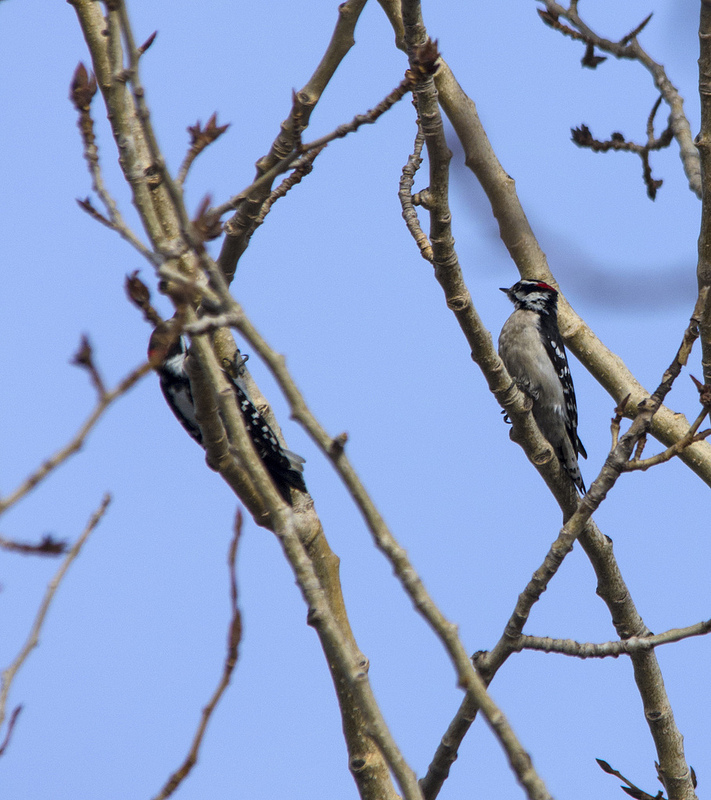Posted by Dan Arndt
After last week’s debacle, I won’t be complaining about flat light, poor light, or a little cold weather every now and then. This week’s walk was in the Inglewood Bird Sanctuary, and while the skies were overcast, the weather was above freezing and there were plenty of new migrants in abundance on the Bow River. The Northern Flickers were displaying and staking out new territory, Ring-billed and California Gulls were back on the river, and we even spotted a surprise American Wigeon amongst the thousands of waterfowl along the banks of the river! Spring is on the way!
These next few weeks are both incredibly sad, but also incredibly exciting for birders in Canada. With the temperatures warming, it means not only more hours of sunlight to allow greater opportunities to see more birds, but it also means the arrival of all the species that have been gone since September, October, or as late as November for some. It also means, sadly, the departure of our winter guests. Snowy Owls, Common and Hoary Redpolls, American Tree Sparrows, Rough-legged Hawks, and usually, the White-winged Crossbills back to either more northerly latitudes, or to higher elevations, until fall returns. One of the best places around town to find new arrivals in the spring, summer, fall and winter, is at the Inglewood Bird Sanctuary. For various reasons, it has just the right combination of trees, bushes, and prey species that make it the perfect habitat for many of our summer residents.
On our walk this week, we were greeted at the beginning of our route by a lone Mule Deer. Some years, there are between six and twelve Mule Deer that call this place home, much to the disappointment of many ground nesting birds, as the deer are known to be completely oblivious of nests and in many cases walk right over them.
Another species in abundance on our walk were the Common Ravens. At times there were four or five of them grouped together calling back and forth and generally causing a ruckus. These birds typically don’t nest in the sanctuary, so either they were drawn to something along the river, or just choosing this place to air their grievances with each other.
The original administration and maintenance building of the Inglewood Bird Sanctuary is the Colonel Walker House. Originally built in 1910, and home to Colonel James Walker of the Northwest Mounted Police. You can read more about the house and Colonel Walker here.
Just outside the Walker House, we were treated to the sight of some recently emerging Richardson’s Ground Squirrels. The first to awaken in the spring are the males, looking to build up their fat stores in anticipation of the upcoming breeding season, to better fight for and defend a mate in the coming months.
These weren’t the only animals looking to make the upcoming breeding season a productive one. We could hardly walk for a few minutes without hearing the calls of one of the many Northern Flickers announcing their territory with their distinct vocalizations, or raucous drumming.
Even the Black-capped Chickadees were calling, defending their territory, and were a little bit less forward with us than they have been in the past few months, their attention also on other matters.
As we reached the southernmost point of our walk and turned back up the river, we were treated to the sight of over ten thousand waterfowl in the course of our walk, split between the Mallards and Canada Geese, with a few Common Goldeneye thrown in, and a pair of female American Wigeon for good measure.
The real treat for those of us who’d been reading the reports all week was the return of the gulls. California Gulls had been reported all week. On Tuesday, only one was seen, but those numbers had swelled to over 30 individuals by today, and a trio of Ring-billed Gulls were also present.
As we tore our eyes away from the river and began the final leg of our walk back to the start, a few of us straggled behind and were treated to the sight of a pair of Northern Flickers calling, challenging, and displaying at each other by fanning out their tail feathers and trying to simply look bigger than their rival.
On our way back out, we also found a second Richardson’s Ground Squirrel, this one a bit bigger and a bit more vibrant, also gathering food and preparing his own part of the sanctuary for his future mate and offspring!
Here’s hoping your birding week is as successful as ours was! See you next week!



